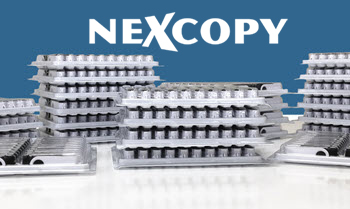As a part of the tech in Techstory, we bring you the latest in the technology from around the world under “TECH THIS WEEK!” every Sunday! This week saw events and product launches around the world in the smart tech space. The breakthrough tech product launches range from the flexible smart phones to 360 degree camera to Smart Tooth Brush to Crowd Cell for connectivity. In case, if you’ve missed any of those, along with the much awaited launch of Ather Energy’s S340 at SURGE, don’t worry just keep reading!
Revolutionary flexible smartphone allows users to feel the buzz by bending their apps

Researchers at Queen’s University’s Human Media Lab have developed the world’s first full-colour, high-resolution and wireless flexible smartphone to combine multitouch with bend input. The phone, which they have named ReFlex, allows users to experience physical tactile feedback when interacting with their apps through bend gestures.
When this smartphone is bent down on the right, pages flip through the fingers from right to left, just like they would in a book. More extreme bends speed up the page flips. Users can feel the sensation of the page moving through their fingertips via a detailed vibration of the phone. This allows eyes-free navigation, making it easier for users to keep track of where they are in a document.
ReFlex is based on a high definition 720p LG Display Flexible OLED touch screen powered by an Android 4.4 “KitKat” board mounted to the side of the display. Bend sensors behind the display sense the force with which a user bends the screen, which is made available to apps for use as input. ReFlex also features a voice coil that allows the phone to simulate forces and friction through highly detailed vibrations of the display. Combined with the passive force feedback felt when bending the display, this allows for a highly realistic simulation of physical forces when interacting with virtual objects.
When a user plays the “Angry Birds” game with ReFlex, they bend the screen to stretch the sling shot. As the rubber band expands, users experience vibrations that simulate those of a real stretching rubber band. When released, the band snaps, sending a jolt through the phone and sending the bird flying across the screen.
Flexible smartphones is expected to be in the hands of consumers within five years. Queen’s researchers will unveil the ReFlex prototype at the tenth anniversary Conference on Tangible Embedded and Embodied Interaction (TEI) in Eindhoven, The Netherlands on February 17.
Source: phys.org
Now Smartphone Will Clean Teeth
 The technology is advancing day by day and it is entering each segment of human life. With the discovery of smartphone, the entire world has transformed and has become digitised. From pen to plane, everything is available online and can be purchased with the help of smartphone and many other devices. Adding one more invention to the list, now, Oral-B has come with a technology which can assist a person in cleaning his teeth. ‘Genius 9000’ a latest electric toothbrush by the company connects to an app on user’s smartphone via Bluetooth to help track his brushing and teach him better technique.
The technology is advancing day by day and it is entering each segment of human life. With the discovery of smartphone, the entire world has transformed and has become digitised. From pen to plane, everything is available online and can be purchased with the help of smartphone and many other devices. Adding one more invention to the list, now, Oral-B has come with a technology which can assist a person in cleaning his teeth. ‘Genius 9000’ a latest electric toothbrush by the company connects to an app on user’s smartphone via Bluetooth to help track his brushing and teach him better technique.
In order to use ‘Genius 9000’, user needs to follow few simple steps. First he needs to connect the toothbrush with his phone and click on the app. Once the app is open, he needs to stick the phone on the bathroom’s mirror at an eye level with the screen facing him.
Now since the user and the phone are aligned properly, the app starts judging the user through the front camera of the phone. App detects user’s movement and how much time he is spending brushing each zone of his teeth. Apart from that, it also generates the brushing history of the user, the amount of pressure put by the user on the brush etc. The model was showcased at ‘Mobile World Congress’ at Barcelona.
Source: techstory.in
BMW Presents Vehicular “Crowd Cell”
 BMW Group unveiled the research project “Vehicular CrowdCell” at the Mobile World Congress 2016 in Barcelona. This project extends the concept of the “Vehicular Small Cell” presented last year in Barcelona. While the “Vehicular Small Cell” is a mobile femtocell that optimizes the mobile radio reception inside vehicles, it is now also capable to enhance the capacity and coverage of mobile radio networks. The BMW Group is teaming up with Peiker and Nash Technologies to present a prototype of the “Vehicular CrowdCell” integrated into a BMW research vehicle.
BMW Group unveiled the research project “Vehicular CrowdCell” at the Mobile World Congress 2016 in Barcelona. This project extends the concept of the “Vehicular Small Cell” presented last year in Barcelona. While the “Vehicular Small Cell” is a mobile femtocell that optimizes the mobile radio reception inside vehicles, it is now also capable to enhance the capacity and coverage of mobile radio networks. The BMW Group is teaming up with Peiker and Nash Technologies to present a prototype of the “Vehicular CrowdCell” integrated into a BMW research vehicle.
The rapid growth of mobile data traffic, e.g. due to the increasing use of multi-media services such as music or video streaming with mobile devices, requires even more powerful mobile radio networks in the future. One strategy to increase the capacity and coverage of future networks is the integration of a large number of small cells and relays in addition to the existing base stations.
In 2015 the BMW Group, together with its partners peiker and Nash Technologies, presented the world’s first mobile femtocell in a vehicle. The “Vehicular Small Cell” optimizes the reception available to mobile devices inside vehicles via the vehicle’s aerial. Now the concept has been extended to create the “Vehicular CrowdCell”. Based on data traffic and coverage demands, the mobile femtocells are dynamically activated to locally enhance mobile radio networks.
One possible application of “Vehicular CrowdCells” are car-sharing fleets – in particular with electric vehicles. Here, a large number of vehicles spread over cities and regions could serve as local radio relays when parked. If one or more users are located close to a mobile femtocell, it is activated on demand in order to increase the bandwidth or provide additional network coverage. In such a way, the performance of the existing network can be dynamically optimized. Benefits for mobile phone users in hotspots include a higher data rate and the absence of reception white spots – especially in areas where the signal coverage is low.
The “Vehicular Small Cell” will optimize in-vehicle connectivity of mobile devices for BMW’s customers and at the same time, the integration into a network of “Vehicular CrowdCells” will enable the ubiquitous and seamless availability of high-quality mobile radio connections outside the vehicle as well.
Source: bmwblog.com
Ather Energy Unveiled Its Ather S340
Ather Energy unveiled the first of their series S340 at Surge ! S340 is India’s first truly smart, electric scooter, structurally robust and intelligently designed, packed with a powerful Lithium Ion battery pack, its IP67-rated battery pack offers an uncompromised ride for 50,000 kms, this connected scooter is designed for urban tech lovers, who are curious about futuristic products.
The vehicle achieves an 80% charge in 50 minutes in fast charging mode and can be charged from any 5A normal socket in normal mode. It has a distinct sporty look with zero lateral weight offset, a low centre of gravity and intuitive LED lights that respond to ambient light conditions.
The S340 is not just redefining electric vehicles, it is one of the pioneers of smart scooters. The touchscreen dashboard integrates cloud based data to help personalise the consumer ride experience. Features like user profile based sign in, on board navigation, pre-configured drive modes like sport and economy allow a personalised experience. Its integration with the S340 Mobile App keeps the rider connected with the vehicle, to configure ride and profile preferences and sync navigation routes remotely. Predictive analytics and aggregation of ride statistics enable customised recommendations. As more vehicles go in-field, aggregate rider and vehicle data will help in customised vehicle updates that will be delivered automatically over the air.
Key features include:
- Touchscreen dashboard with 24*7 connectivity.
- On-board navigation.
- Range of 60 km in single charge.
- Top speed of 72 kmph.
- 15 patent applications filed.
- Doorstep delivery and service
News Source: techstory.in
Samsung Gear 360 is the company’s first 360 degree camera
Along with the flagship S7 and S7 Edge smartphone, Samsung also announced its first 360 degree recording camera called the Gear 360 at the unpacked event in Barcelona. The camera is another step in the company’s focus on virtual reality after the Gear VR.
The golf ball shaped camera has dual 15MP sensors (one on each side) with a wide angle fish-eye lens and f2.0 aperture. 360-degree video will be recorded in 3,840 x 1,920 pixels resolution and it can also record 180 degrees video at 1,920 x 1,920 pixels. The camera does not have built-in processing power to stitch the image/video together and requires them to be transferred to a compatible phone via WiFi Direct. The free smartphone app imports the content and then stitched them for a complete 360-degree image/video. The 360 degree content can then be viewed on the phone or on the Gear VR headset.
It has a removable 1050mAh battery with a claimed recording time of up to 140 minutes. You also get a microSD slot for storage (up to 128GB card supported) and microUSB port for charging. Gear 360 is IP53 certified against water and dust resistance – it cannot be immersed in water for shooting but can handle water A standard tripod socket is present on the bottom for connecting standard camera accessories such as a tripod and mounts. A tiny plastic tripod will be included in the price also. The camera is currently only compatible with Samsung S6, S6 Edge, S6 Edge Plus, Note 5, S7 and S7 Edge. Samsung says more devices will be made compatible with the Gear 360 in the coming months.
Source: economictimes.indiatimes.com
For regular updates on Tech, check out Techstory’s Technology Space!














